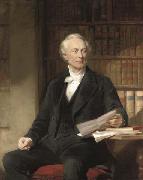Wholesale Oil Painting No Minimum |
|||||||||||
|
|
|||||||||||

|
|||||||||||
|
|
|
||||||||
George RichmondEnglish Painter, 1809-1896 Painter, draughtsman and engraver. He was a precocious draughtsman. In 1824 he entered the Royal Academy, London, the same year as Edward Calvert, who was a part-time student of Joseph Severn. Richmond first exhibited at the Academy in 1825 and that year met William Blake in the Highgate house of John Linnell (ii). Like his lifelong friend Samuel Palmer, Richmond fell under Blake's spell, comparing him to the Prophet Isaiah and forming close friendships with Blake's other disciples, including Calvert. He visited Palmer at Shoreham, chiefly in the summer of 1827, and both he and Calvert became prominent members of Palmer's band of ANCIENTS, who frequented the Kent village in the late 1820s and early 1830s. The tempera panel Abel the Shepherd (1826; London, Tate) is typical of Richmond's early paintings, which reflect the pronounced influence of both Blake and Palmer. They are painted in an archaic style and include Christian and literary themes and high-minded if obscure genre subjects such as the Eve of Separation (1830; Oxford, Ashmolean). The human figure was central to these pictures as it was not for Palmer, who expressed sentiment through landscape motifs. Richmond was also active as a draughtsman and miniaturist during this period; his Christ-like head of Palmer, in watercolour and gouache on vellum (London, N.P.G.), dates from 1829. |
||||||||
|
|
||||||||
Portrait of Octavius Wigram
Portrait of Octavius Wigram Painting ID:: 74164 |
Portrait of Octavius Wigram (1794-1878)
ca. 1861
cjr Portrait of Octavius Wigram (1794-1878) ca. 1861 cjr |
|||||||
|
|
||||||||
|
George Richmond English Painter, 1809-1896 Painter, draughtsman and engraver. He was a precocious draughtsman. In 1824 he entered the Royal Academy, London, the same year as Edward Calvert, who was a part-time student of Joseph Severn. Richmond first exhibited at the Academy in 1825 and that year met William Blake in the Highgate house of John Linnell (ii). Like his lifelong friend Samuel Palmer, Richmond fell under Blake's spell, comparing him to the Prophet Isaiah and forming close friendships with Blake's other disciples, including Calvert. He visited Palmer at Shoreham, chiefly in the summer of 1827, and both he and Calvert became prominent members of Palmer's band of ANCIENTS, who frequented the Kent village in the late 1820s and early 1830s. The tempera panel Abel the Shepherd (1826; London, Tate) is typical of Richmond's early paintings, which reflect the pronounced influence of both Blake and Palmer. They are painted in an archaic style and include Christian and literary themes and high-minded if obscure genre subjects such as the Eve of Separation (1830; Oxford, Ashmolean). The human figure was central to these pictures as it was not for Palmer, who expressed sentiment through landscape motifs. Richmond was also active as a draughtsman and miniaturist during this period; his Christ-like head of Palmer, in watercolour and gouache on vellum (London, N.P.G.), dates from 1829. Portrait of Octavius Wigram ca. 1861 Source 19th century oil painting cyf |
||||||||
|
|
||||||||
|
Prev Next
|
||||||||
|
|
||||||||
|
Related Paintings to George Richmond :. |
||||||||
|
|
||||||||
|
CONTACT US |

